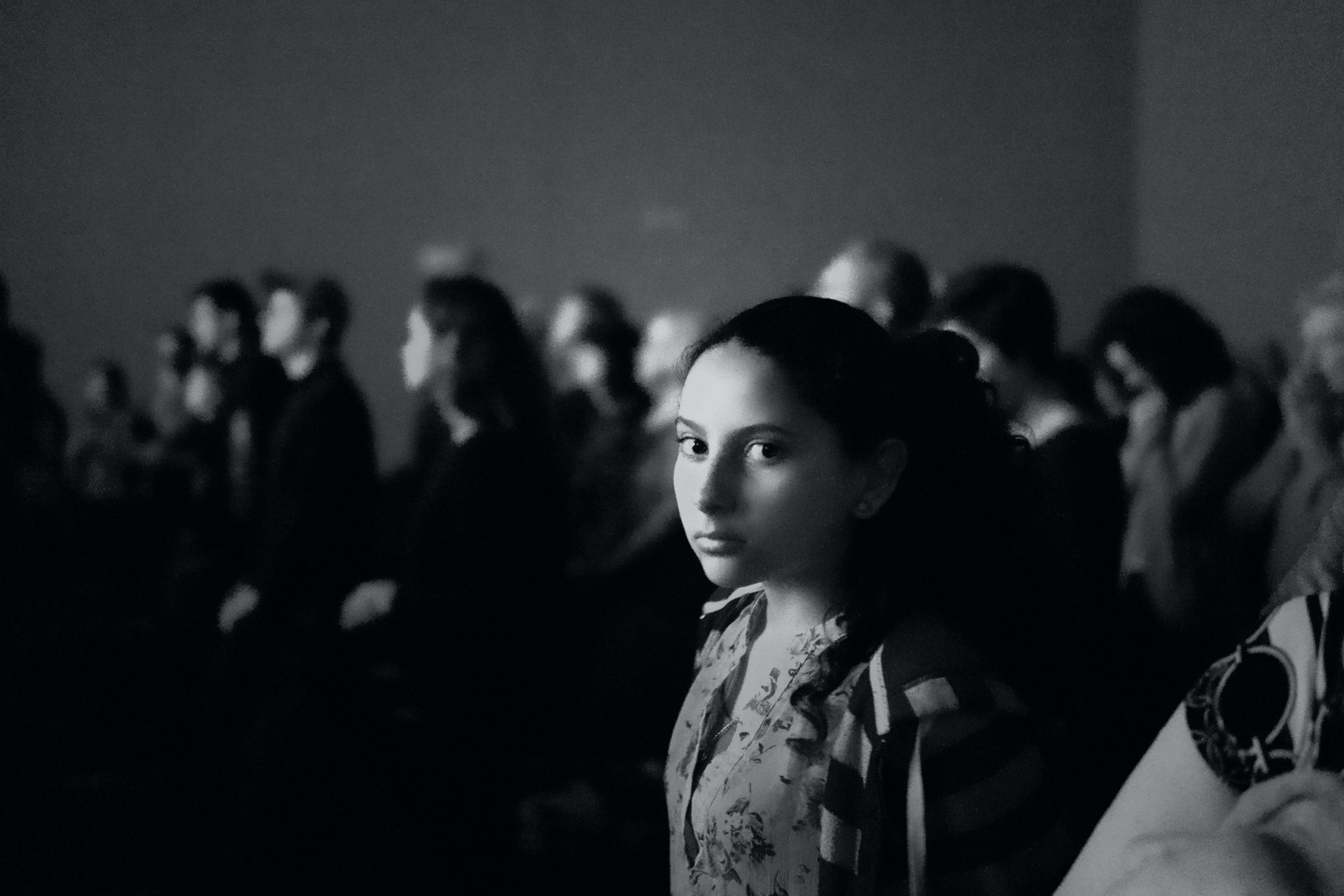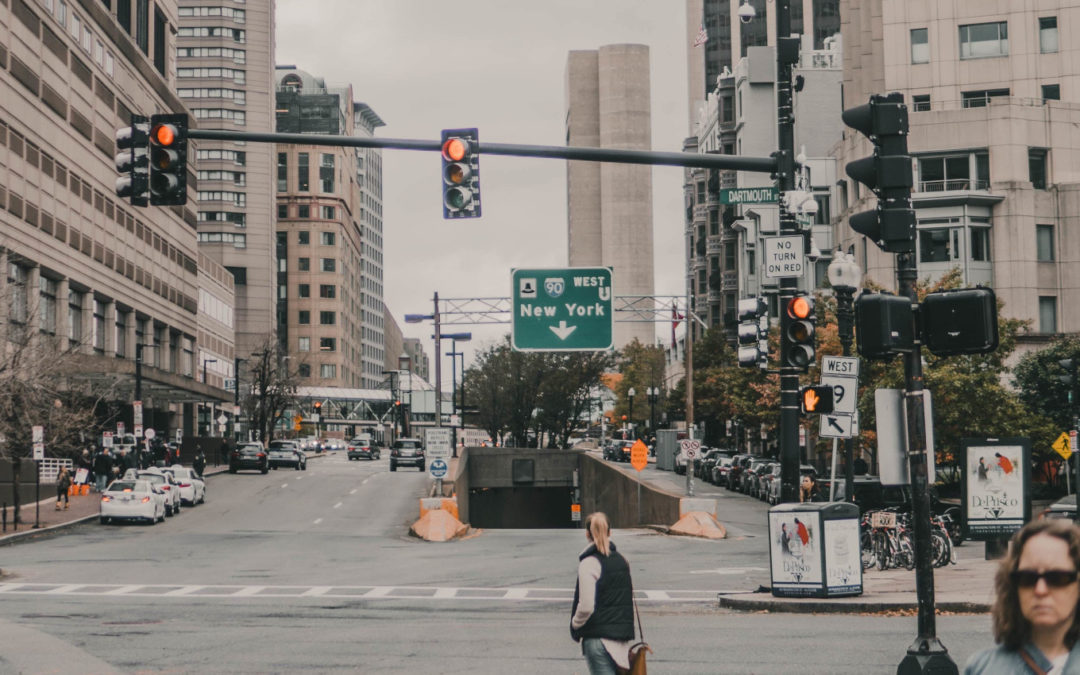Accessibility will have a new face at the Olympic and Paralympic Village in Greater Paris.

Hearing Impaired People: a Multitude of Profiles for Different Needs

Hearing Impaired People: a Multitude of Profiles for Different Needs
Did you know that hearing impaired people have several profiles and that the way they identify themselves is important? You may be familiar with deaf and hard of hearing people but for each of these categories there’s actually a whole range of hearing impairments. This means that people don’t have the same needs in terms of accessibility.
What’s a hearing impairment exactly? Knowing what this type of disability englobes will help you address the needs of hearing impaired people to best meet them. Whether you manage a shopping mall and welcome customers from the deaf community or you have a new colleague who’s hard of hearing, you’ll see that you can implement or do simple actions to communicate effectively with them.
What does it mean to be hearing impaired exactly?
“Hearing impaired” is often used to describe people with hearing loss, from mild to profound, that is to say deaf and hard of hearing people.
It may surprise you to know that a deaf person can actually discern certain sounds. But they may not exploit them. It turns out that completely deaf people only represent a minority. Most hearing impaired people can perceive sounds or can experience difficulties in following a conversation like those who are hard of hearing.
Another noteworthy fact: a deaf person isn’t necessarily non-speaking just as a non-speaking person isn’t necessarily deaf!
Seeing that some hearing impaired people cannot properly hear their own voice, their speech may be difficult to understand for others. In fact, all deaf people have the physiological ability to speak but some never use their voice. They may prefer to use sign language, a way of communication entirely based on manual articulations, to express themselves. Some may remain silent while using sign language while others may articulate sounds.
Other deaf people can use their voice to communicate with a hearing person but it doesn’t mean they can hear.
As you can see, there’s a whole range of abilities and/or preferences related to hearing impaired people. By remaining open-minded, you’ll make the hearing impaired person you’re interacting with more comfortable and at ease. That’s the first step in establishing trusting communication.
If you want to break down clichés on people with a hearing impairment, read our article:
What solutions enhance accessibility for the hearing impaired?
Whether you’re dealing with deaf or hard of hearing people, you can make sure your venue or your transit network is accessible to them so that they can have access to information, find their bearings and communicate with your staff:
⊗ Message boards, captioned videos if there are any, pictograms at points of interest to provide visual and textual information.
⊗ Audio induction loops or amplification systems at your information desk so that people wearing hearing aids can properly hear your staff.
⊗ An instant transcription app such as Ava to transcribe conversations between hearing people and the hearing impaired.
⊗ American Sign Language interpret: for example if you run a museum, an ASL interpreter is perfect to make culture accessible to the deaf community.
⊗ Transparent face masks for all your staff members: they protect them and your customers from COVID-19 and enable your deaf customers to lip-read. That way, they can understand your personnel.
⊗ Indoor wayfinding apps such as Evelity so that deaf and hard of hearing users can get their bearings in any complex venues. Evelity, developed by Okeenea, is the perfect solution for maze-like venues such as shopping malls, hospitals or transit networks. The app provides textual information and is currently installed at the JaySt-MetroTech subway station in New York City!
Always keep in mind that a well-trained staff is extremely valuable to your venue. We’ve come up with 12 tips to welcome a deaf or hard of hearing person!
Your staff needs to know about people with disabilities, their profiles, their capabilities and difficulties in order to best assist them. And for each type of disability, there’s a multitude of different profiles! By being aware of their profiles and by acknowledging their differences, more or less subtle, we’ll favor inclusion.
Very various profiles of hearing impairment
For the deaf and hearing impaired community, you’ll see that according to their profile, they don’t all have the same needs. Let’s dive into their specificities!
People who were born deaf or hard of hearing
Due to genetic factors or complications during pregnancy, a baby can be born with a partial or complete hearing loss. Usually, people who were born completely deaf learned to communicate with sign language. It’s what they have always known.
People who became deaf on a later age
The terms “deafened” and “late-deafened” can be used to describe people who became deaf as adults. Their hearing loss may have been caused by a chronic illness or an ear infection. Seeing that their hearing impairment occurred later in life, they had to adapt. As you can imagine, this could prove to be more or less difficult.
Although around 48 million people have a hearing impairment in the United States, less than 500,000 of them know and use sign language. This means that most of the deaf and hearing impaired community relies on another way to communicate with others.
Hard of hearing people
They have a mild or moderate hearing loss. But this term can also be employed as a way for hard of hearing people to dissociate themselves from the deaf community. Some of them don’t want to and/or don’t belong to the deaf community’s culture.
People with cochlear implants
Cochlear implants are surgically implanted to people with severe or profound hearing loss. These devices give the receiver a modified perception of sound which means that people with cochlear implants need to have an auditory training to feel comfortable with them.
Once again, we see that adaptation is key for those who choose to have cochlear implants. However, we need to be aware that most of the deaf community is against them. They consider they shouldn’t have to adapt to fit with society’s standards and norms. For them, cochlear implants stand against their language and culture.
People with hearing aids
Unfortunately, there is still a lot of stigma attached to hearing aids. A lot of people feel ashamed to have some. According to the National Institute on Deafness and Other Communication Disorders (NIDCD), among the adults aged 70 and older who could benefit from using hearing aids, fewer than one in three has ever used them. And it’s even less for adults aged 20 to 69.
Even though hearing aids make environmental sound audible for its users, people with hearing loss are afraid of what others might think of them.
Hearing impaired people with additional disabilities
Tackling accessibility, we often discuss disabilities per family type meaning that we divide them in categories to focus on one disability type at a time. But people may also have multiple disabilities. Indeed, they may combine two disability types.
A deaf or hard of hearing person can also have a motor, a visual or a cognitive impairment.
Let’s focus here on deaf-blind people that is to say people with a combination of hearing and visual losses. Contrary to what the name could suggest, deaf-blindness isn’t a total inability to see or hear.
Even for this rare case, there are different profiles:
⊗ People who are profoundly deaf and totally blind and who can only experience the world through touch,
⊗ People who are totally blind but have some usable hearing,
⊗ People who are profoundly deaf but have some usable vision,
⊗ People with both usable vision and hearing.
Depending on their capabilities, accessibility and communication can be more or less challenging. But the thing with visually and/or hearing impaired people is that their disability may not be obvious for others.
From an exterior point of view, they may first appear as “valid” people. It’s only when they’re in a difficult situation that their impairment can be visible. For example, you may be standing in a queue at a café and once it’s up to the person in front of you to order then they may have difficulties to read the menu or to communicate with the staff. Actually, 80% of people with disabilities have invisible disabilities!
Knowing and understanding disabilities, whatever their types are, actually represents the first step towards inclusion! We’re all different but our differences mustn’t stand in the way of accessing and enjoying everything the world has to offer. We all need to keep an open mind to make sure inclusion for all is everywhere. For the hearing impaired, that means being aware of their difficulties in order to break them down.
Plus, as we saw, how deaf and hard of hearing people identify themselves is important. The best way is to let them tell you what best describes them and what they identify with.
Sources:
Deafness and Hearing Loss (WHO)
National Association of the Deaf
Would you like to know more about the hearing impaired and their everyday challenges? Check out these articles:
What You Need to Do to Ensure Accessibility for Deaf People at Public Venues
Public Transport Information: 5 Solutions for Deaf and Hard of Hearing Users
Published on 12th November, 2021
media

Knowing and understanding disabilities, whatever their types are, actually represents the first step towards inclusion! (..) For the hearing impaired, that means being aware of their difficulties in order to break them down.
writer

Carole Martinez
Content Manager
stay updated
Get the latest news about accessibility and the Smart City.
other articles for you

Open Data Is Key to Fostering Universal Accessibility
Open data represents an opportunity for cities to reach universal accessibility. It shows the missing links of the mobility chain.
Our Audio Beacons Guide the Blind and Visually Impaired at the Helsinki Subway
The Helsinky subway improved their audio signage system by installing on demand and remotely activated audio beacons.
7 Good Reasons to Install Audio Beacons at Your Public Transport Network
Audio beacons are an efficient way to provide more autonomy to blind and visually impaired people. They can easily use public transport.

Will Remote Activation Become the Norm for Accessible Pedestrian Signals?
More and more cities like New York have been exploring remote activation to trigger accessible pedestrian signals.
share our article!
more articles

Disability Statistics in the US: Looking Beyond Figures for an Accessible and Inclusive Society
Disability Statistics in the US: Looking Beyond Figures for an Accessible and Inclusive Society Around 61 million adults in the United States live with a disability. Diving into disability statistics in the US will help us know exactly who is concerned and what...
Our Audio Beacons Guide the Blind and Visually Impaired at the Helsinki Subway
Our Audio Beacons Guide the Blind and Visually Impaired at the Helsinki SubwayOur audio beacons equip the new line of the Helsinki subway in Finland. They help blind and visually impaired people locate the points of interest of a station. For users with visual...

At What Intersections Should You Install Accessible Pedestrian Signals?
At What Intersections Should You Install Accessible Pedestrian Signals? When you install accessible pedestrian signals, you first need to ask yourself where exactly they are needed. Are there any intersections blind and visually impaired pedestrians particularly...

Hearing Impaired People: a Multitude of Profiles for Different Needs
Hearing Impaired People: a Multitude of Profiles for Different Needs Did you know that hearing impaired people have several profiles and that the way they identify themselves is important? You may be familiar with deaf and hard of hearing people but for each of...
NEVER miss the latest news about the Smart City.
Sign up now for our newsletter.
Unsubscribe in one click. The information collected is confidential and kept safe.
powered by okeenea
The French leading company
on the accessibility market.
For more than 25 years, we have been developing architectural access solutions for buildings and streets. Everyday, we rethink today’s cities to transform them in smart cities accessible to everyone.
By creating solutions ever more tailored to the needs of people with disabilities, we push the limits, constantly improve the urban life and make the cities more enjoyable for the growing majority.



Recent Comments